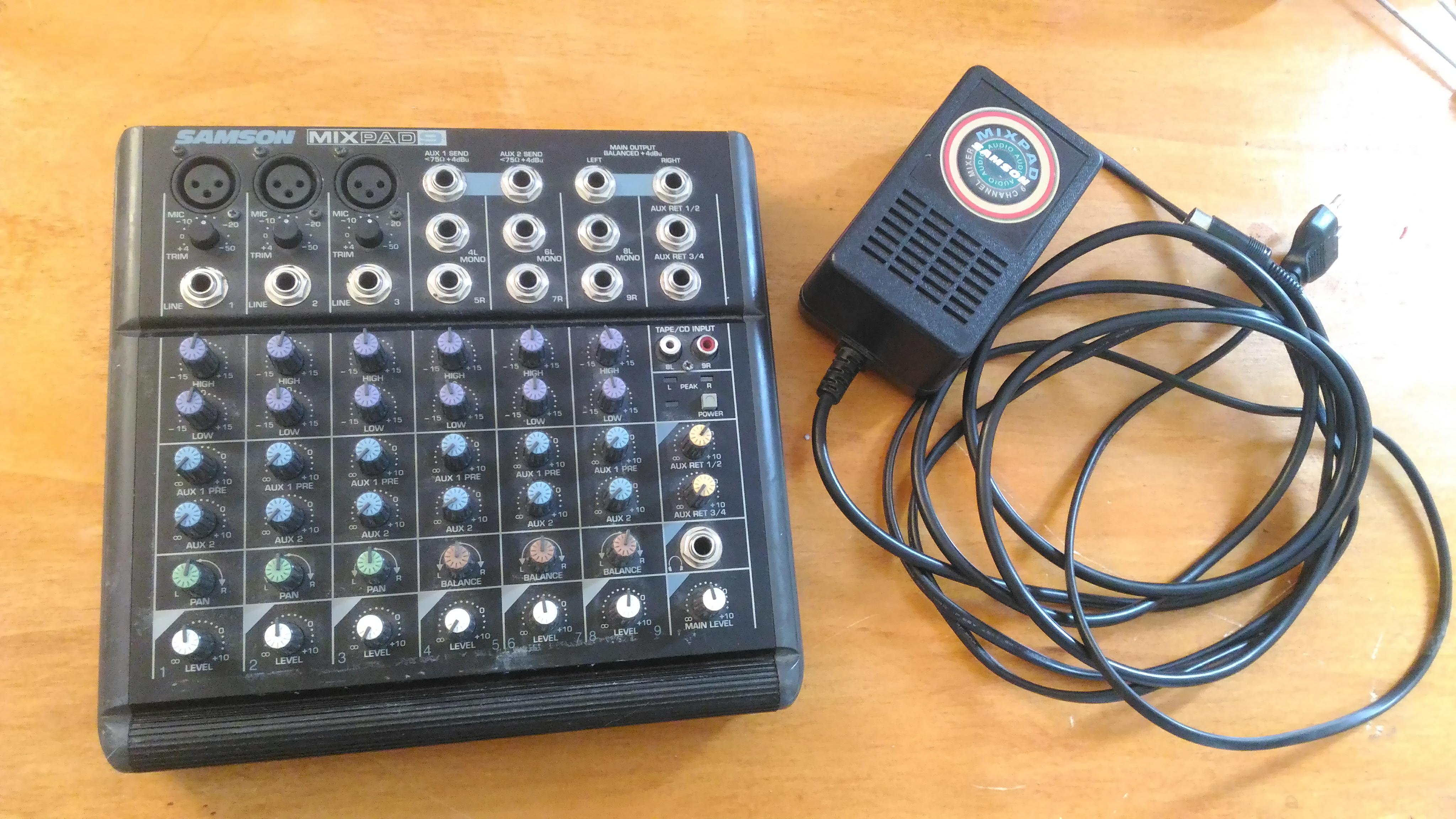

It simply combines the various inputs to a single stereo output, with the option to apply basic EQ and feed a couple of aux sends. Used with a capacitor mic, the performance was as clean and quiet as I could have wished, with no trace of hiss.īecause there are no unnecessary frills, this is a very simple mixer to use. The distortion figures are low, the crosstalk figures are typical for this size of mixer and the maximum input level of +22dBu provides adequate headroom. Technically, the MixPad 9 has a respectable ‑128dB (weighted?) equivalent mic input noise, and an audio frequency response extending from 5Hz to in excess of 50kHz, within +/‑ 3dB. Conventional metering has been forsaken for a couple of peak LEDs, and in spite of slightly wobbly pots, the overall build quality inspires confidence. The external PSU input is on the rear panel, and the power is switched on from a small button on the front.Ĭosmetically, the MixPad 9 combines functionality with the required dash of panache - the steel case has contoured plastic end‑cheeks and a even a mini armrest (for engineers with mini arms?), but perhaps its best design point is the very clear, uncramped control surface. Rotary controls are used for the master output and all the channel gains, while the phones level is controlled by the main level pot.Īll the line ins and outs work at a nominal +4dBu level, though they will of course handle ‑10dBV signals too, and for convenience, all the audio connectors, with the exception of the mic and tape inputs, are quarter‑inch jacks.

There are no aux send master controls, though there are level controls for the two stereo returns. Using the left input only configures the channel for mono use.Ī smooth‑sounding, twin‑band high/low EQ (+/‑ 15dB 100Hz and 10kHz) is fitted to all channels, along with one pre‑ and one post‑fade aux send, and a pan/balance control. All three mic/line inputs are electronically balanced with gain trim controls and permanent phantom power, while the three stereo line channels are unbalanced, with separate jacks for the left and right inputs. The MixPad 9 is divided into mono mic/line channels and stereo line only channels - in this case, three of each. There's also a stereo phono tape/CD input, but this is paralleled with the last pair of line inputs, so it can't be counted as independent. Measuring a diminutive 239 x 228 x 58mm, the MixPad 9 scores hugely on cuteness, and if you count the two stereo returns, you'll find you can mix up to 13 different signals, which is impressive for a mixer that's no bigger than a mouse mat. Samson's 9‑channel MixPad 9 is so small, it makes Mackie's 1202 VLZ look like a full‑scale recording console.

The construction might be solid steel, but you don't need the strength of Samson to lift this little mixer, as Paul White discovers.


 0 kommentar(er)
0 kommentar(er)
